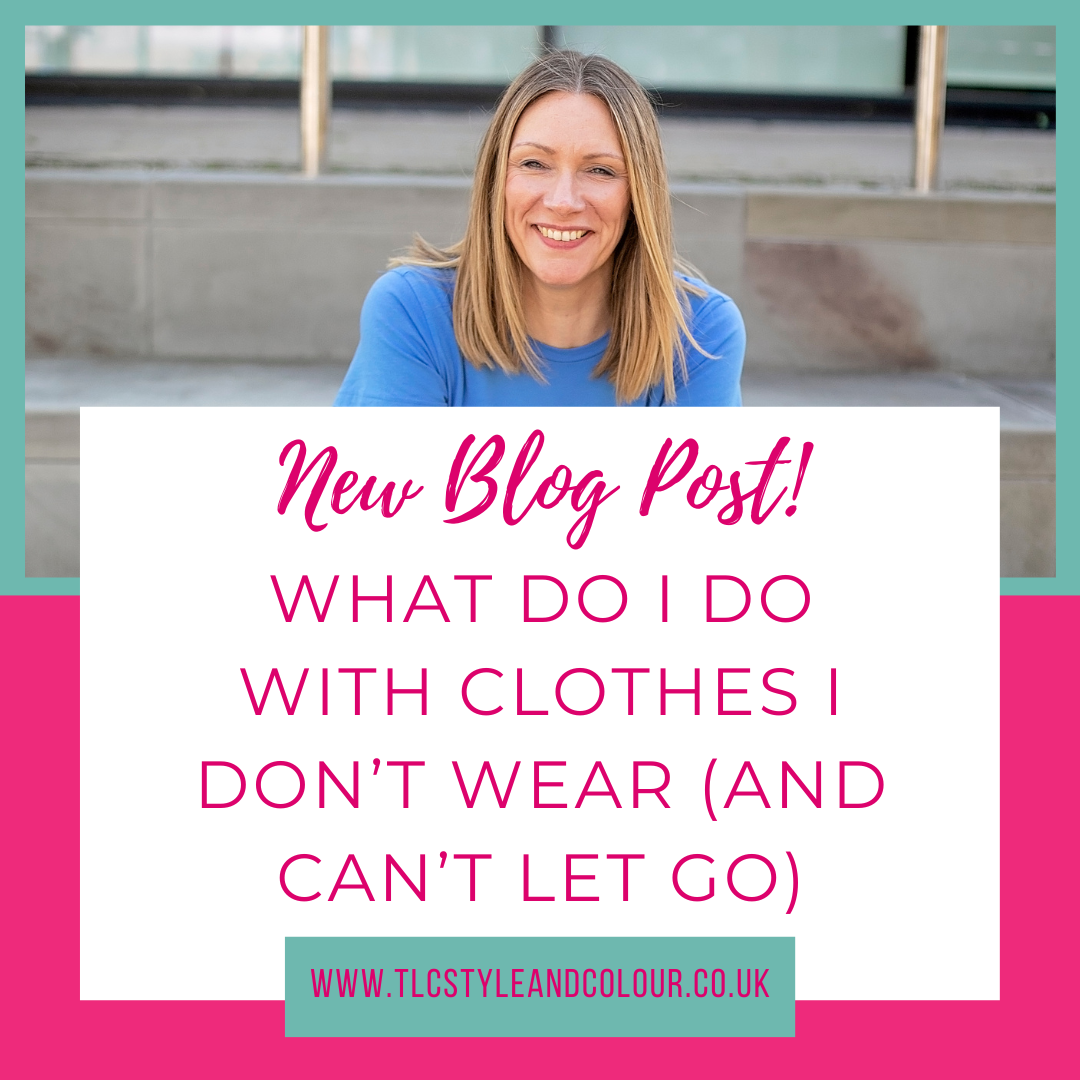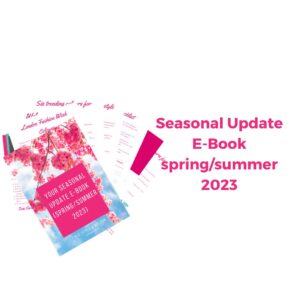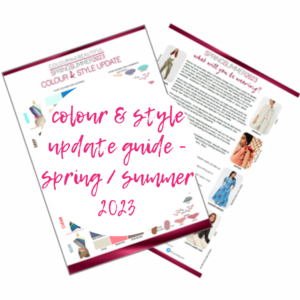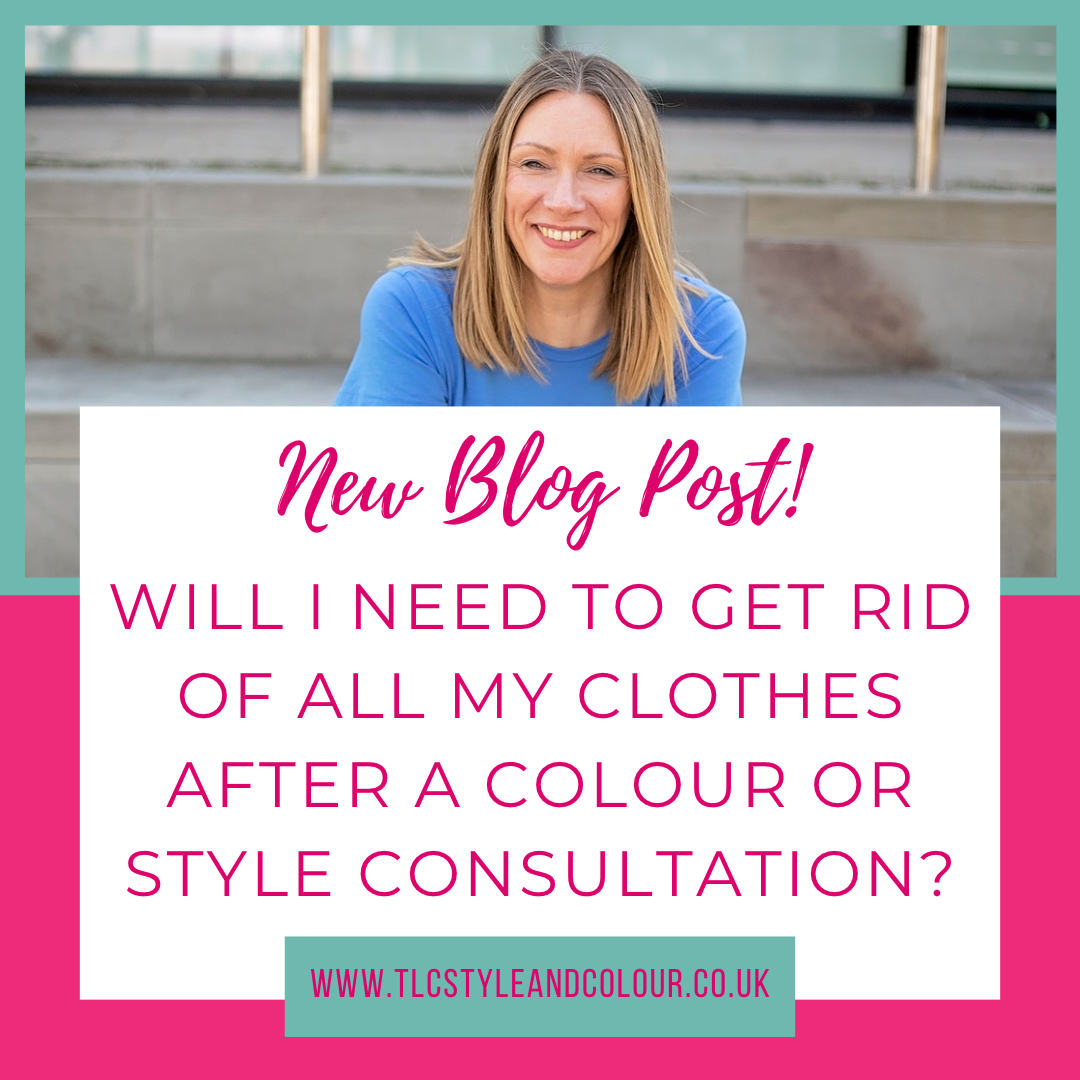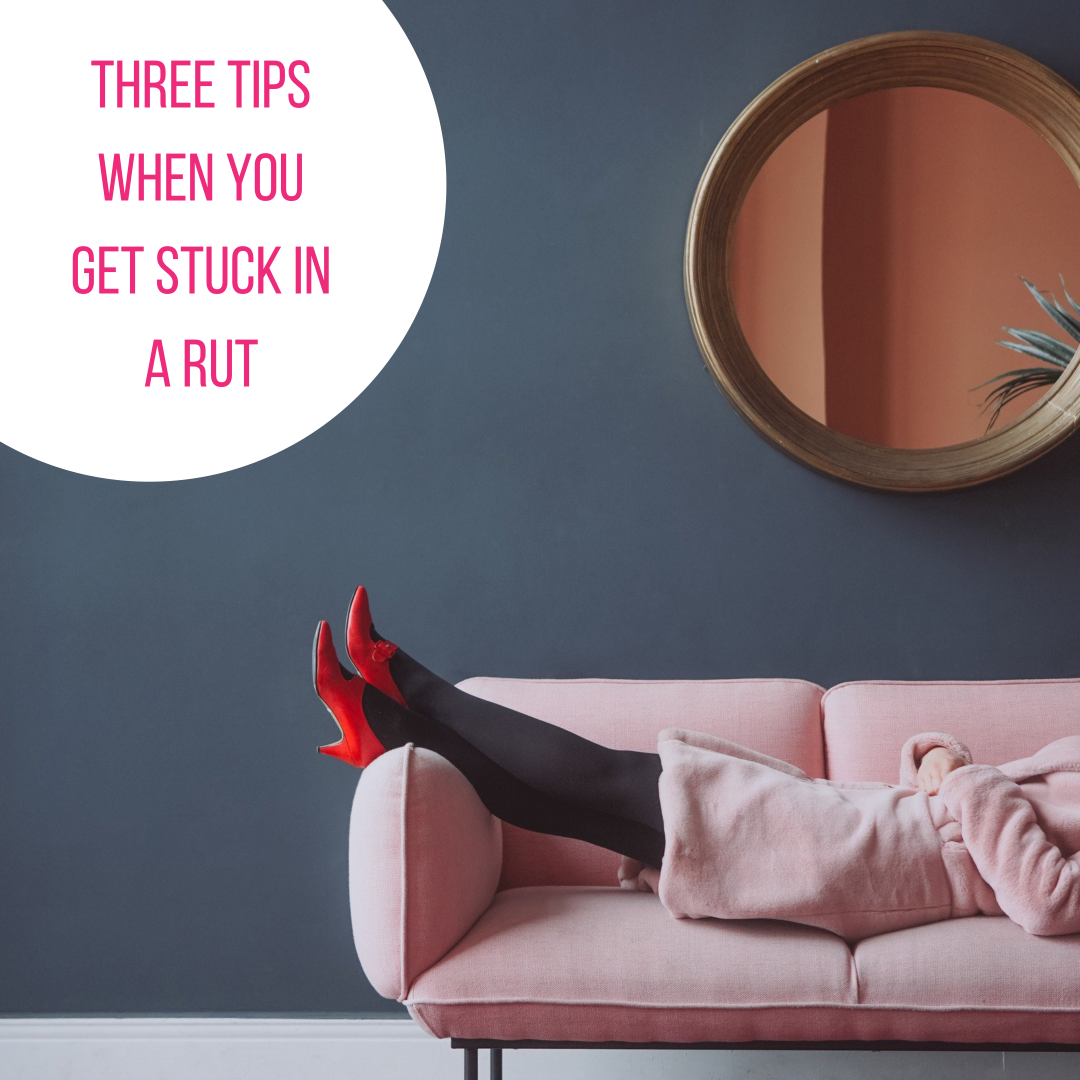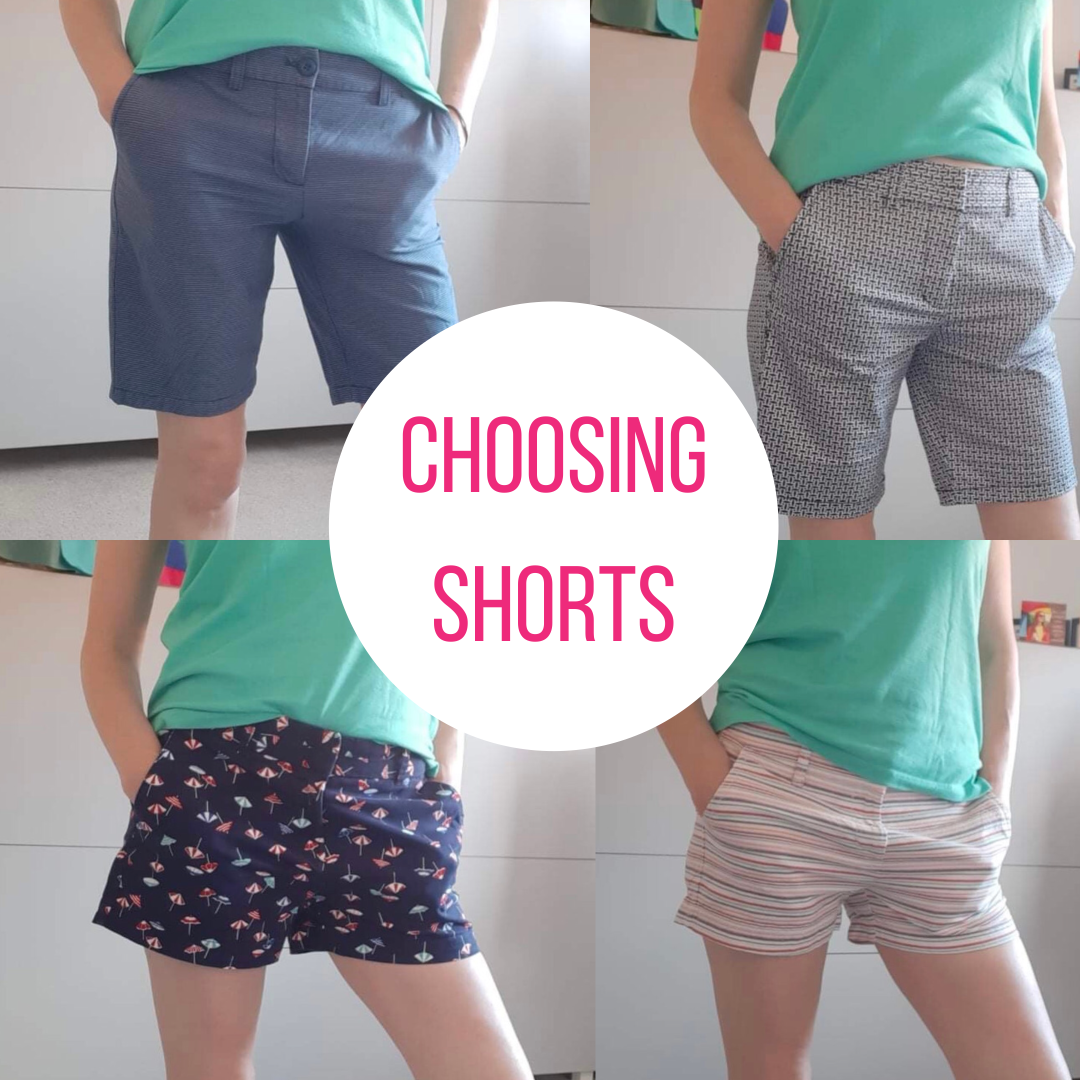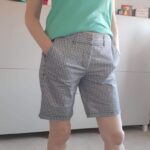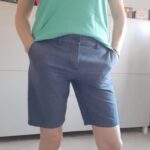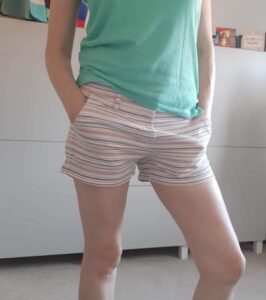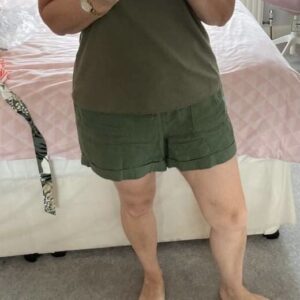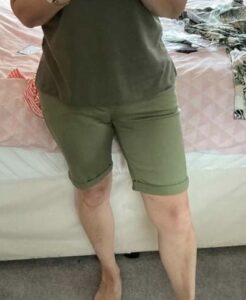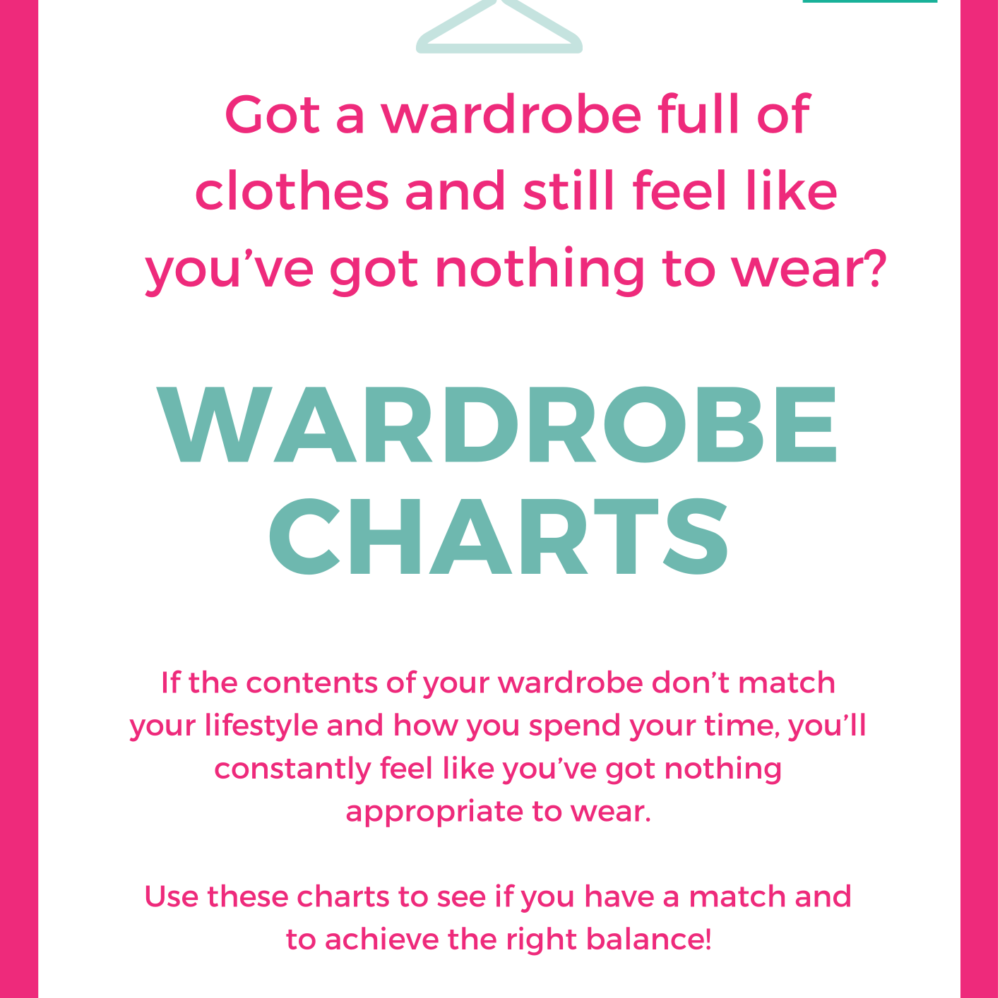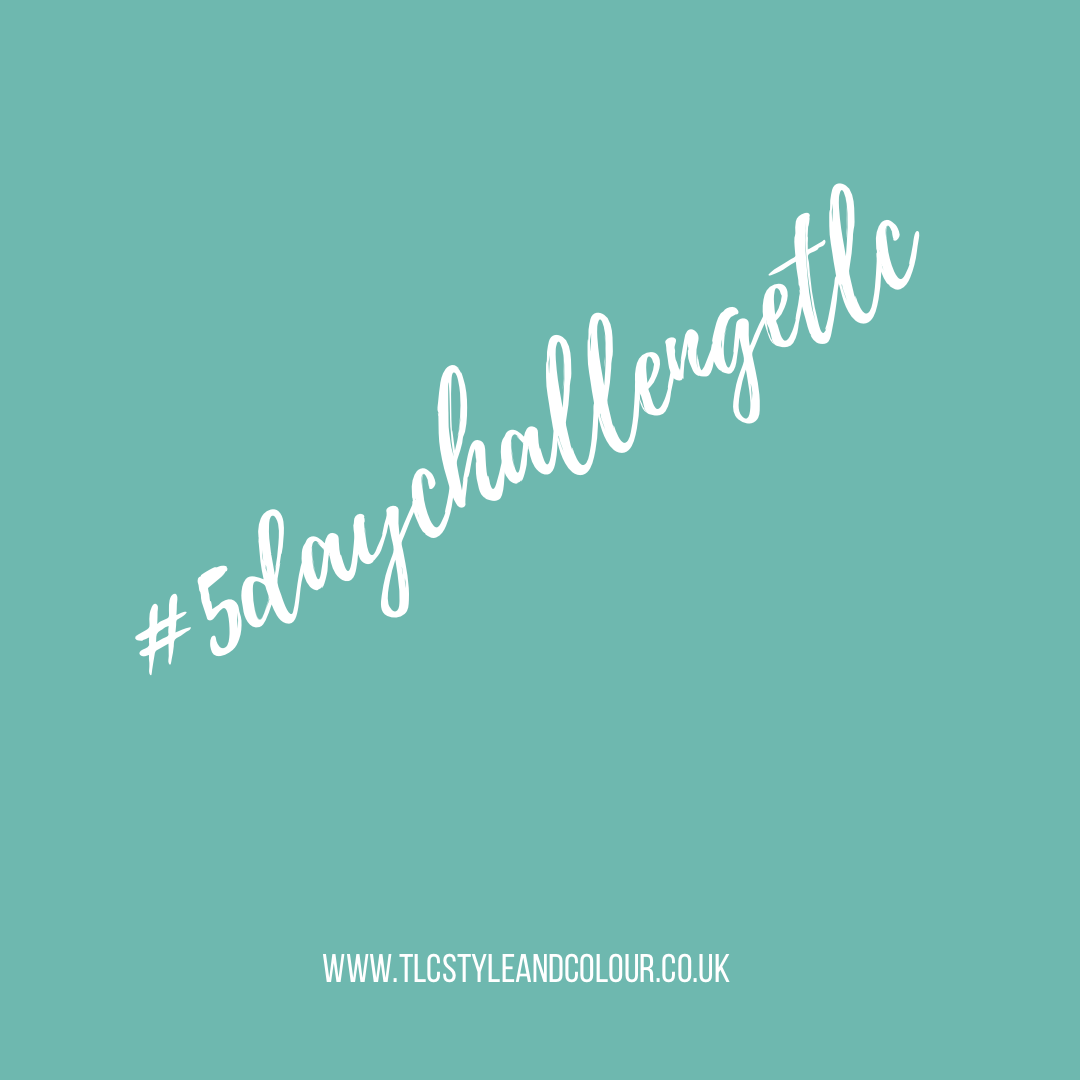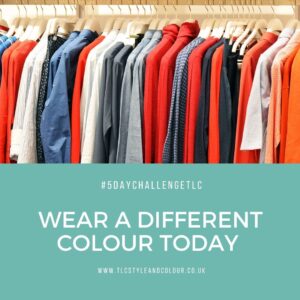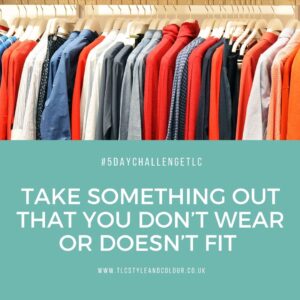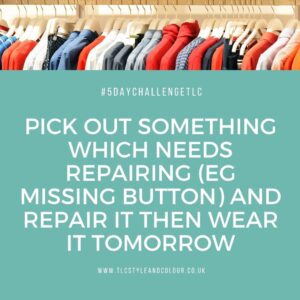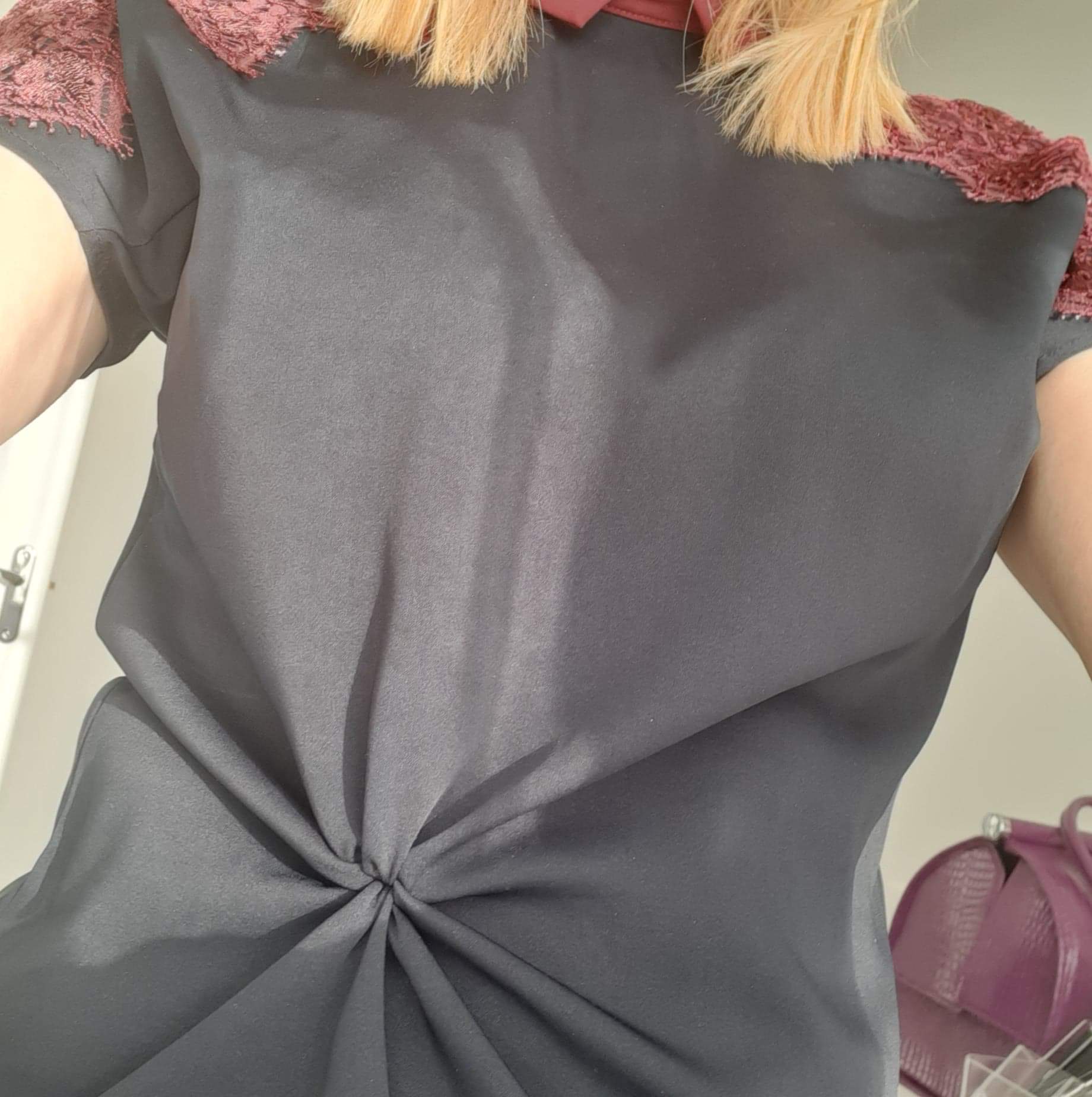High rise garments are everywhere and it was one of the ‘trends’ I covered in my last seasonal update, with tips on how to wear them.
Not all high rises are the same! There can be fit issues depending upon your body shape and proportions because, a high-rise garment won’t fit everyone the same. It’s important to note this because it’s easy to feel disheartened when something doesn’t fit and to feel there’s something wrong with you. There isn’t. The clothes just don’t fit you. It’s them, not you remember!
As I’ve said a million times; there is no universal sizing. The only way to get the right fit, it to have it fit to YOUR body.
I had a conversation with a lady recently. She was frustrated at how hard it was finding trousers which fit her correctly. Often, she felt they didn’t look good when she wore them.
It’s a common problem. But, it was clear to me why she’d have challenges. With a curvy hourglass shape and a narrow waist compared to her hips, fit and fabric is key. From what she was wearing, I could also see that her upper body was proportionately shorter than her lower body.
With just a few tweaks and clever choices, these fit challenges are easily overcome. Understand how to dress your shape and proportions and the style, cut and fabric to flatter and fit you.
Having explained these aspects, her face lit up. She told me that understanding these tips and tricks has helped her to accept herself more, realising it isn’t her that’s ‘wrong’, but the clothing isn’t ‘right’.
I’ve summarised some challenges here to guide you and have some examples I tried out for myself (with a video if you keep reading).
Shorter legs
Anyone who has short legs will benefit from creating the illusion of a higher waistline. However, raising the waistline alone won’t always lengthen the leg. Where your top finishes, the rise and your footwear should be taken into account too, along with the length of your upper body. Get these wrong, and you could end up making yourself look out of proportion or appear shorter!
Shorter in the body
If you’re shorter in your upper body area, you run the risk of enhancing this further by wearing a high waisted skirt or trousers. Tucking in your top can also create an imbalance, depending upon the length of your legs. Clever tricks to lengthen your upper body are needed rather than enhancing how short it is.
Larger bust
If you’re busty, it’s not just the colour, style or fit of your tops which have an impact. The rise and waistline of your bottom half clothes can highlight this area further too and create a ‘shelf’ for your chest.
Shorter or longer rise
If your own rise doesn’t for the rise of the garment, the fit will be off; you’ll either feel that something is cutting you in half, or you’ll end up with a saggy bum!
Longer body
Anyone with a long upper body will find it much easier to wear a higher rise, as it can provide more ‘balance’ and visually raise the waist area. Check the impact on your lower body, depending upon the length of your legs.
Tummy concerns
A little suction around the tummy area, can be very welcome from a high waisted trouser or jeans! But, it’s important to assess the rest of your body and shape for fit too.
Petite in height or scale
Petites can gain valuable inches in height, particularly if they take the hemline to floor-skimming proportions. However, it’s worth understanding the impact on your proportions. Not all petites are short in the leg! You may be short in the body with a regular leg length. I’ve had petite clients who are short in the leg, with a long body. Each have their fit challenges, which makes shopping only in the petite section a mistake.
Fabric choice
Whatever size or shape you are, attention really should be given to the fabric of the garment. Whether you have any of the fit challenges mentioned above, or not, your choice of fabric is key to achieving a flattering silhouette. Plus, your choice of fabric plays to your style personality in more ways than you realise.
By way of an example; satin will be far more fluid than a taffeta type material and linen will behave differently to denim.
Along with knowing your colours and style, understand your rise, choose the right fabric and, know your proportions! It’s all covered during a style and shape consultation.
Examples
Here are three high waisted garments – one pair of trousers and two skirts to illustrate challenges with fit. Head over to YouTube to watch my video here.
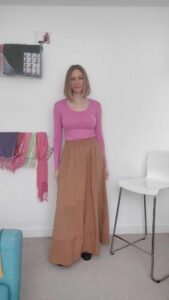
Plain full skirt
The elasticated waistband fits at my waist correctly and it has pockets which is great for my style personality. Whilst the colour isn’t great for me (slightly too much warmth), because it’s worn on my bottom half, so much more forgiving. I prefer block colours generally speaking, especially in separates but, the material isn’t working for me. It’s a much heavier weight and with the amount of fabric, there’s barely any movement or fluidity. When it does move, it’s rather noisy and I feel like one of those toilet roll lady dolls from the 80s!
My upper body appears to look a lot shorter than it actually is making me look bottom-heavy, which appears to imbalance my frame and it enhances my chest further, making me look very busty!
Whilst the colour not being great for me was a pro, the reality is that I don’t have anything to wear it with so it will make outfit creation too difficult for me to make work. Coupled with the fabric and the fact that it doesn’t flatter or enhance my shape, it wouldn’t be something I would keep and wear as I’d feel I was making too many compromises.

Patterned full skirt
The material is a much lighter weight with lots of fluidity meaning it drapes well and doesn’t swamp my frame at all.
It’s a good neutral shade for me and the pattern to the bottom half appears to draw attention away from my chest. Whilst this isn’t the correct size for me, the waistband width is too wide, so it doesn’t sit on my waist as it should and my upper body appears shorter than it is. The skirt looks to sit underneath my bust, enhancing it further.
The pattern in reality is a bit too bold for me and doesn’t suit my style personality. Arguably, it’s also too large for my scale and frame.
Whilst the fabric and colour is better than the first, it’s not creating a flattering look as the fit is slightly off and the style not very me. Too many compromises again, so not a purchase I would make.
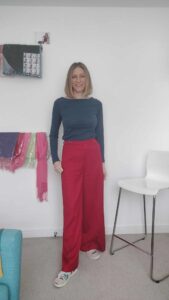
Super high waisted trousers
The material was a linen mix so they had less weight to them and weren’t as stiff as 100% linen. The trouser waistband was neat and uncluttered which didn’t add bulk to my tummy and hip area which is nice in a more tailored fit of trouser. I loved the colour which wasn’t a million miles away from geranium! The wide leg was a decent size and they didn’t make me appear too bottom heavy or busty, and they didn’t drag too much on the floor in terms of length when I had trainers on.
These were super high rise and they were a little too super on me. With my waist and shape, they felt that they needed to sit higher on my body so the fit wasn’t as good as it could have been. I felt that they had to’ rest’ on my hips making the crotch seem really low and baggy in the middle.
I was very tempted with these. The tailored fit worked for me as did the colour. The resting on the hip, created a more relaxed fit which I could have got behind, but I did feel that the fit wasn’t quite right due to the super high rise. If it had been less super, they’d have been a much better fit for me.
The garments featured are from Next and were featured during my spring/summer 2024 workshop in April 2024. The Autumn/Winter workshop takes place on 5 October. All seasonal update material is available here and updated twice each year.
Check out the Youtube video here

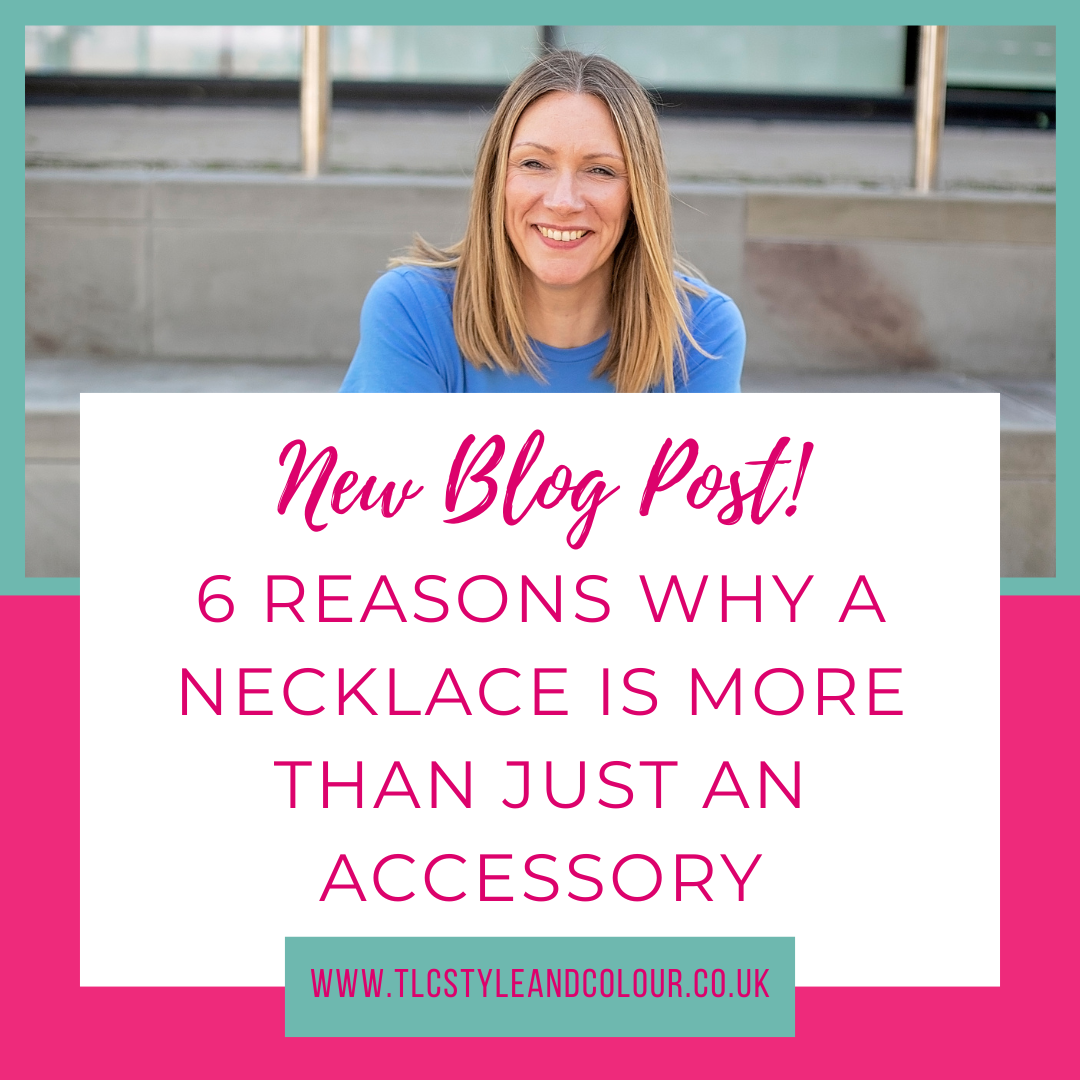



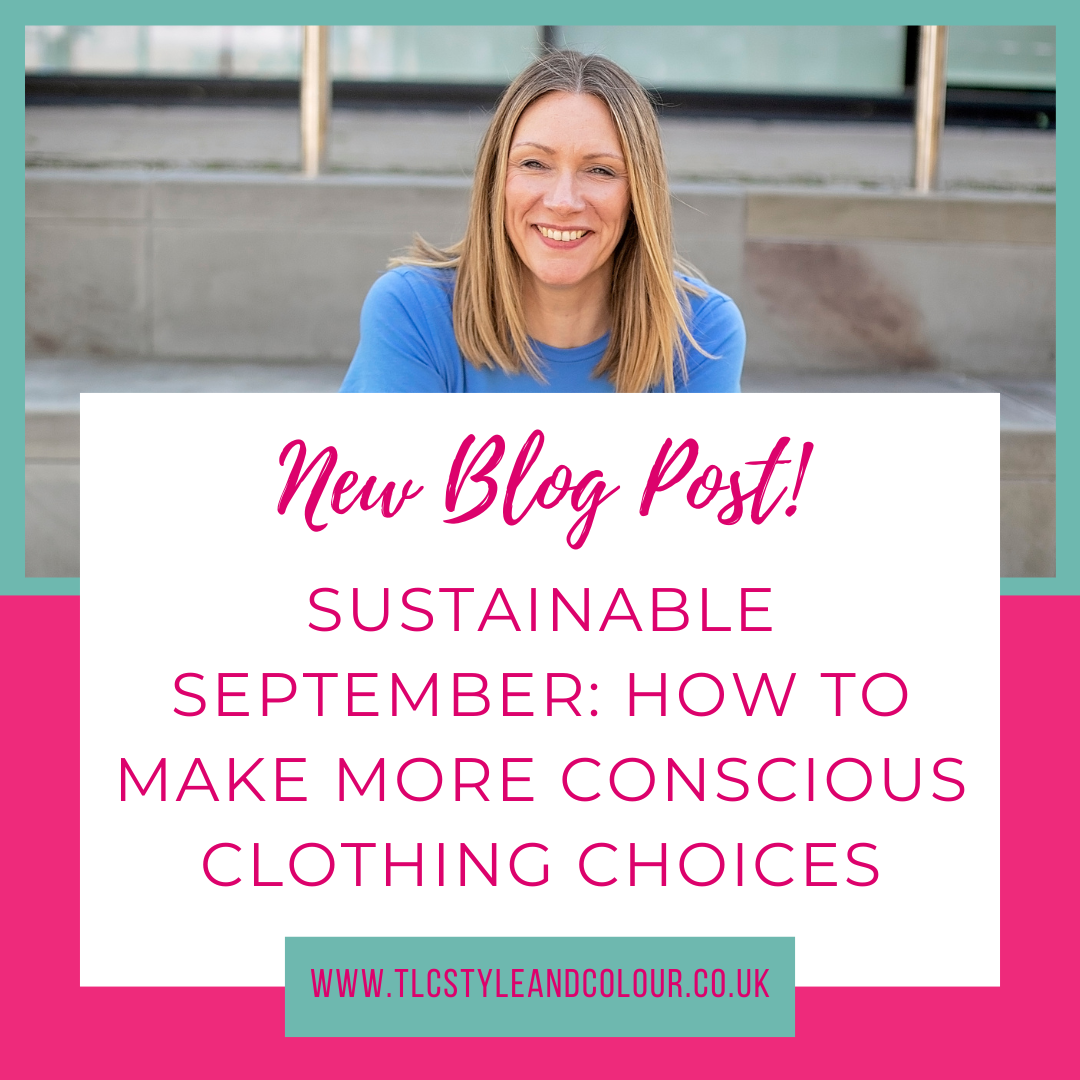




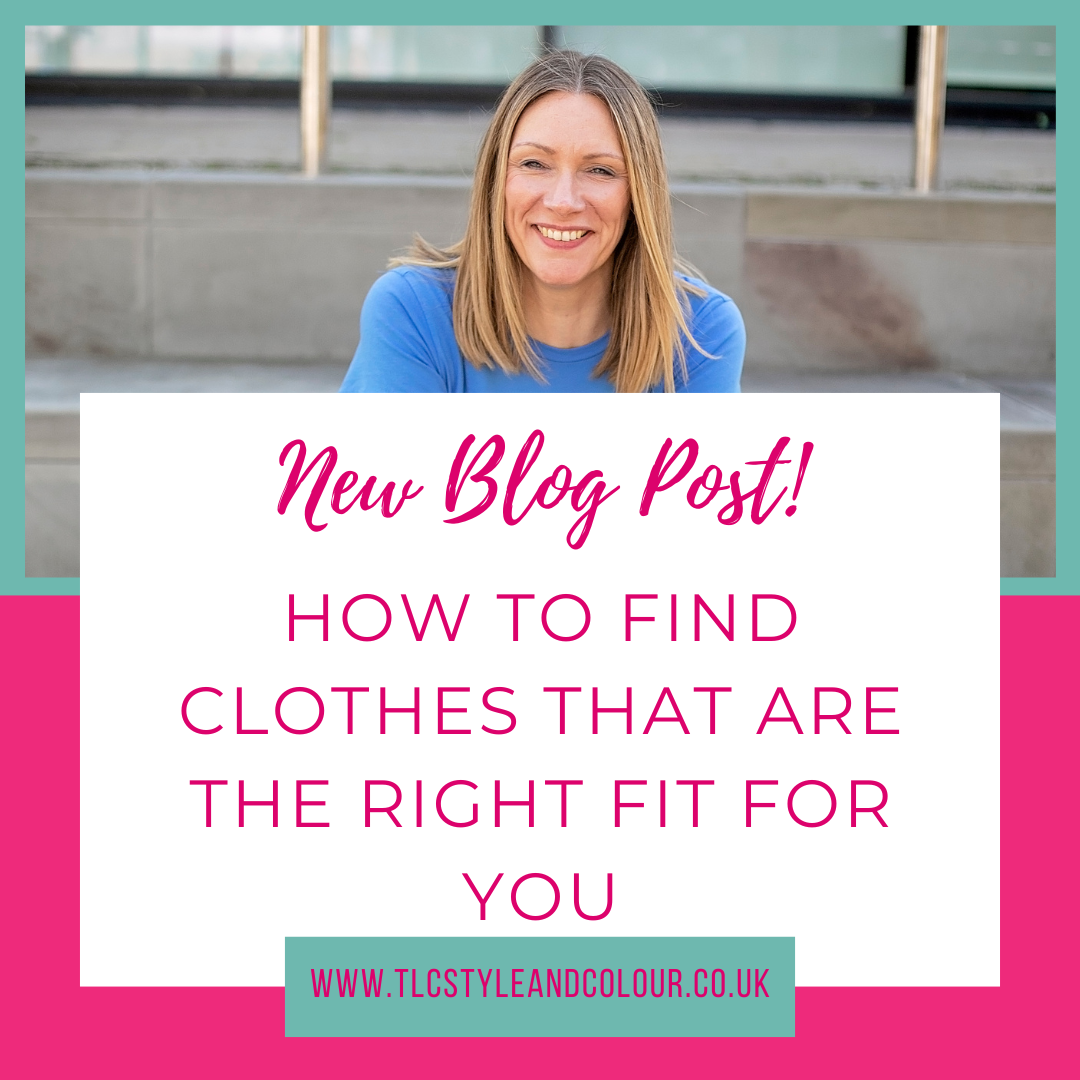
 Don’t forget the finer details like sleeves and necklines. A high neckline when you’ve a large bust will enhance the area. You’ll find a lower neckline (like a v-neck), will break up the colour and be more flattering. Sleeve lengths and shoulder seams can be corrective; like a ruffle sleeve when you’ve got small and narrow shoulders. On the other hand, they can enhance the area if you’re broader with wider shoulders by merely extending the shoulder line out, visually speaking.
Don’t forget the finer details like sleeves and necklines. A high neckline when you’ve a large bust will enhance the area. You’ll find a lower neckline (like a v-neck), will break up the colour and be more flattering. Sleeve lengths and shoulder seams can be corrective; like a ruffle sleeve when you’ve got small and narrow shoulders. On the other hand, they can enhance the area if you’re broader with wider shoulders by merely extending the shoulder line out, visually speaking.
